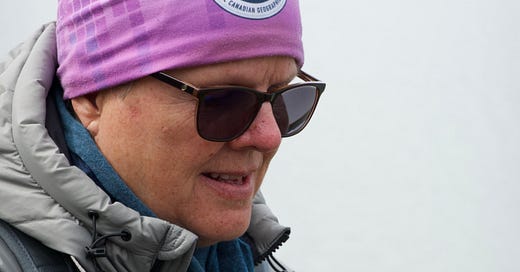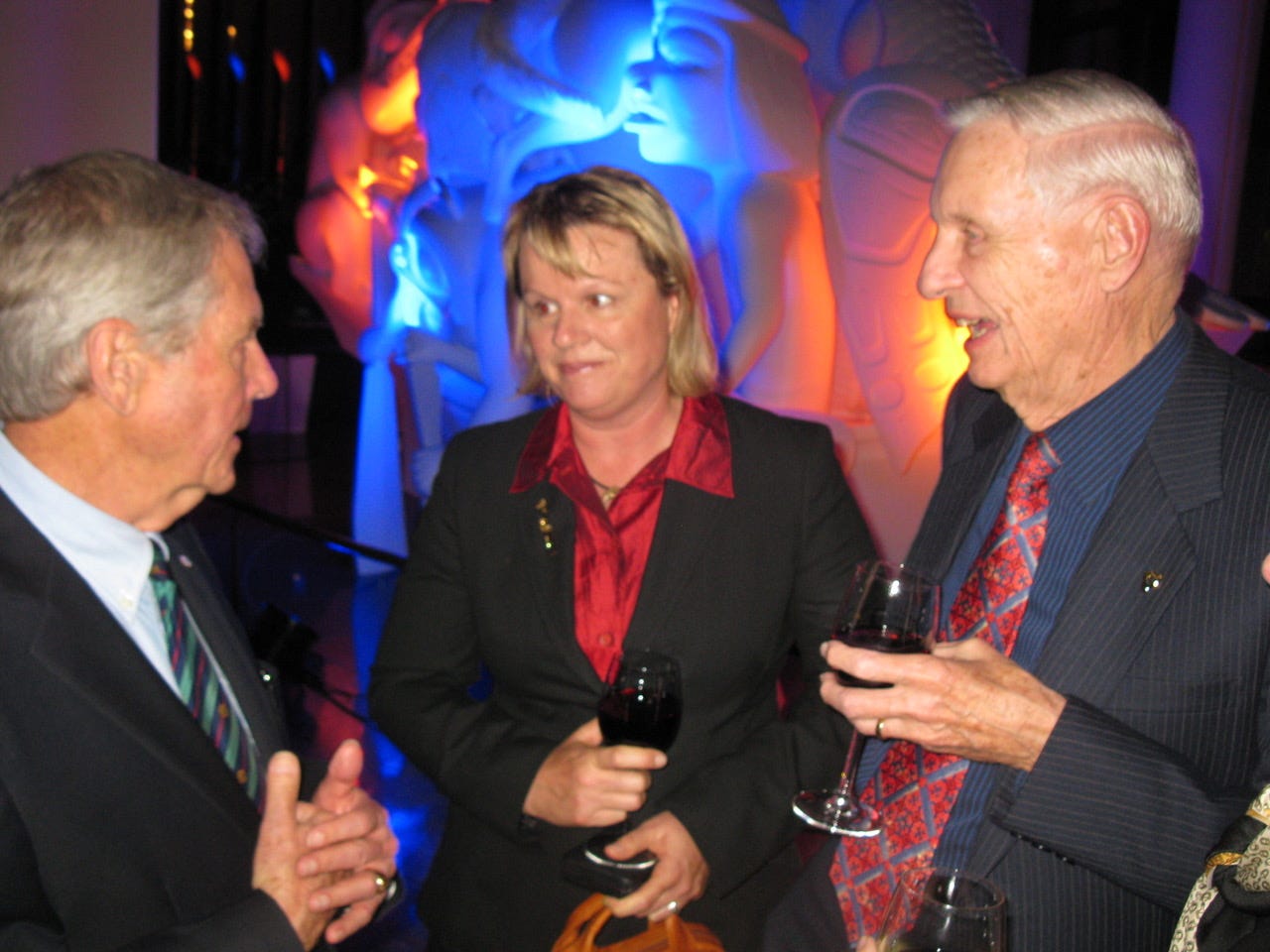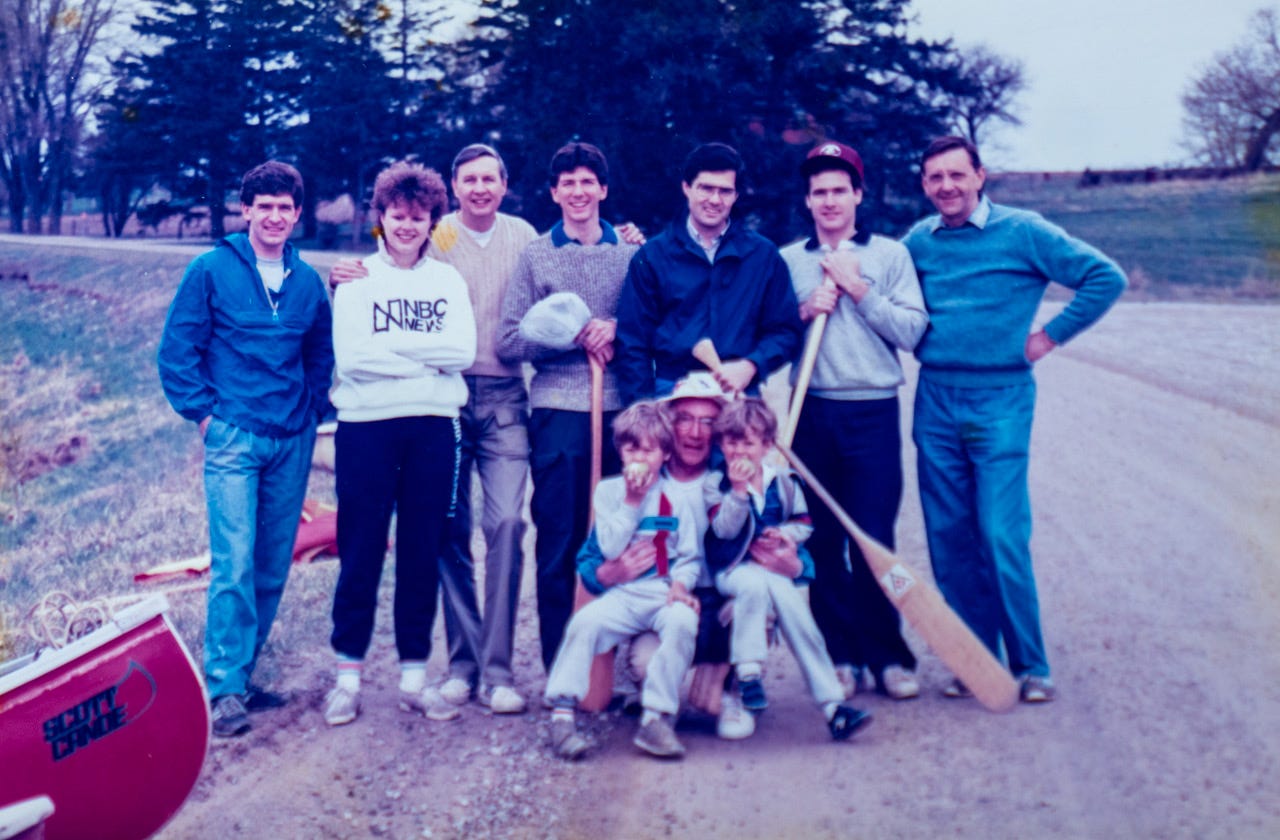On my pinky finger rests an iron ring, a quiet inheritance from my father, who wore it until his death a few years ago. The ring is simple, unadorned, but heavy with meaning. In Canada, it carries a legacy rooted in tragedy. The tradition of the Iron Ring began in 1922, born from the need for accountability among engineers—a profession whose errors, as history showed, could carry devastating consequences.
My Father’s ring on my pinky as I set up a shot at a glacier in Alaska.
The ring’s origin traces back to a Quebec bridge over the St. Lawrence River that collapsed not once but twice, in 1907 and 1916. Each failure claimed lives—88 in total—and left behind a wreckage that stood as a stark reminder of human error. The bridge’s demise was attributed to flaws in its engineering, a cautionary tale of oversight and responsibility. Out of this tragedy grew a symbol meant to weigh on the minds of those who designed and built the structures society relied upon.
Legend has it that the first Iron Rings were forged from the debris of the collapsed bridge, its twisted metal reborn as a token of humility and duty. For my father, the ring was a badge of his profession, of the logic and precision he brought to the world. For me, it holds a different weight. I wear it not as an engineer but as his daughter, carrying a piece of his legacy even as I walk a creative path far from the one he knew. Yet, in its quiet symbolism, the ring reminds me of something we share: the power and burden of creation, whether in steel or in art.
Creativity often feels like a bridge built from fragile connections, its purpose and structure not always clear to those who approach it from different perspectives. As an artist, I saw this firsthand with my father, an engineer. His world was one of precision and functionality, where every design served a clear purpose, every problem had a solution. My world, however, is one of ambiguity and exploration, where meaning isn’t always obvious and where questions are often more important than answers.
My father struggled to understand why I choose the paths I did—why a painting might focus on an abstraction rather than a concrete image, or why I find meaning writing through metaphors that don’t offer direct interpretations. To him, art could seem like a puzzle with missing pieces, a structure without clear function. He often asked, How do you put food on the table? What value does your work hold? For me, those questions are the point. Creativity isn’t about certainty; it’s about discovery, about capturing what can’t always be expressed in words.
At this formal event, Dad (far right) finally realized that I knew a thing or two when I introduced him to the famous wildlife artist Robert Bateman (left).
This difference in perspective highlights how creativity and analytical thinking can sometimes feel worlds apart. Many engineers like my father look for tangible solutions, while artists like me embrace the uncertain and the subjective. Where he saw inefficiency or abstraction, I see depth and connection.
Yet, even in these missed connections, there’s value. His questions challenged me to think about how I communicate through my work, while my artistic life invited him to step outside the concrete to enjoy visions of places he could never go. Though he may not have grasped my motivations, his perspective reminded me that creativity is not just about self-expression—it’s about building bridges, even fragile ones, between worlds that might otherwise remain separate.
Yes, that’s me in the NBC News shirt (big hair days!) with my Dad on my left shoulder. We were participating in a charity canoe race, benefitting a South Ontario children’s hospital.
My dad, Robert Rabjohn, and I riding bikes on Center Island, Toronto. He rode his bike well into his eighties!
Join us on this audio podcast -
Two middle-aged adults in their pajamas enjoy a Canadian snow day - sharing thoughts on the holidays, creativity, and artificial intelligence.
"Robert’s creativity runs on caffeine—without your help, he’s just a guy with a keyboard and a faint whiff of desperation." buymeacoffee.com/jillrob
Staying with the “Father and Daughter” theme of Jill’s column this week, let us share a beautiful music video. The young lady playing the harp and singing is Romany. Her father is the old dude with white hair accompanying her on guitar. His name is David - as in Gilmour. Yes, you may have heard of his former band: Pink Floyd!









How beautiful Brian. Your daughter will remember that special time for the rest of her life. I had a precious trip with just my Dad when I was a young teen. I will never forget each and every detail. It was truly special. We all want to make our Dad's proud. many good wishes to your whole family! Jill
Another thought-provoking article on a subject that, if you will permit me, I will add to from a Father's perspective Jill. Recently, my wife mentioned that I had taken my sons on adventurous trips over the years (canoe trips, scuba diving, camping and the like) but that I had never done anything special with our daughter Caren (now 44 with 2 grown girls out on their own career paths in life). Ashamedly, I realized the truth of this fact and asked Caren what she would like to do on a Daughter-Father trip. She said, "Let's take a cruise together Daddy!" You also talked about your relatoinship with your father wondering if he understood your motivations for doing what you do, but that he understood and respected your chosen path in life. That is something I realized as a Father during our 11 day cruise together, adult to adult, one on one time spent together having totally new conversations that we otherwise might never have had. Even though we will never 'forget' the past years of our father-daughter and vice versa relationship, your perspective takes a huge shift when you are both conversing and exchanging ideas as adults! It was amazing as I realized more deeply what makes my daughter tick! But I will always get her a crazy 'stocking stuffer' for Christmas! Merry Christmas with warm memories of Christmases past!